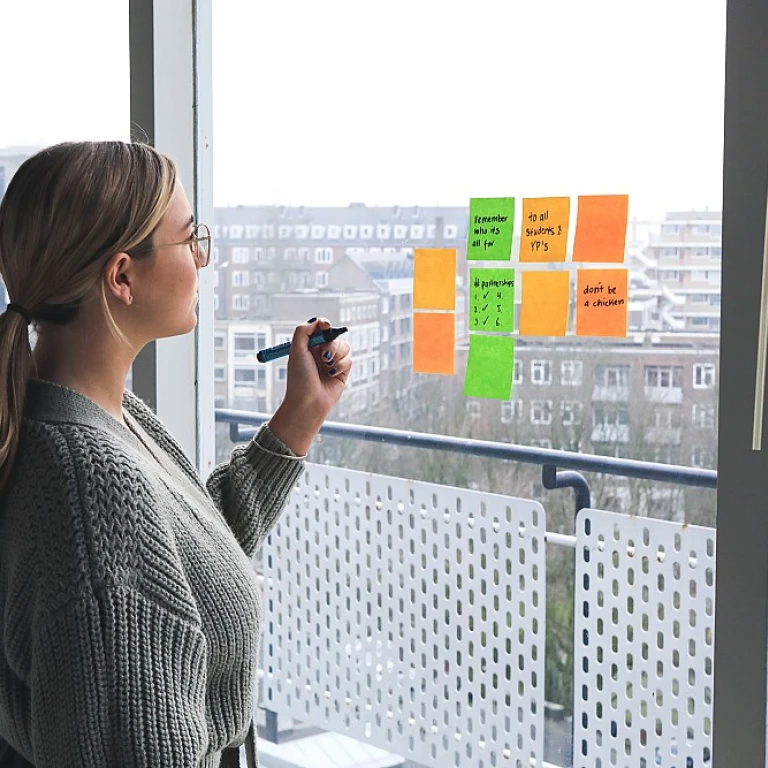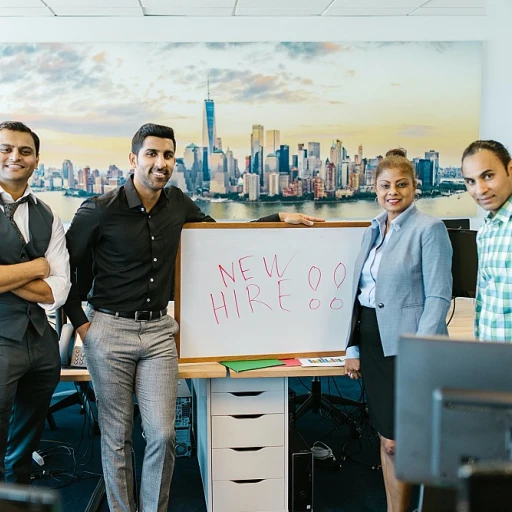Understanding the Employee Engagement Challenge
Decoding Employee Engagement Difficulties
Employee engagement has long posed a significant challenge in the workplace. This difficulty hinges on nurturing a thriving workplace culture and addresses a wide range of factors, including workplace innovation and employee well-being. The challenge isn't just about getting employees to show up; it's about fostering genuine enthusiasm, commitment, and long-term dedication to their roles. Navigating the challenges of maintaining high engagement levels in ever-evolving work environments requires continuous improvement and adoption of innovative strategies. Employee engagement isn't a one-size-fits-all resolution. An innovative approach to engagement recognizes the value in each worker's unique contributions. It taps into creativity and problem solving as critical components of a dynamic workplace. The increasing complexity of hybrid work models only adds to these challenges. Organizations must find ways to ensure that remote and on-site employees alike feel valued and connected to their work culture. In this evolving landscape, employees need resources and support tailored to their specific needs and preferences. In response, a more personalized approach to engagement is starting to gain prominence. Employers are utilizing innovative tactics that recognize individual contributions and preferences, allowing for a more responsive and agile engagement strategy. This approach aligns well with broader innovation efforts seen across industries. Companies are beginning to use technology to enhance employee engagement levels. By leveraging data-driven insights, they can establish more effective engagement plans. Moreover, in the context of globalization, companies in the United States, for instance, are paying more attention to crafting competitive advantage through employee engagement. As companies strive for continuous improvement in this space, new ideas and innovative practices come to the forefront. The demand for workplace innovation and an improved culture innovation process points toward a promising direction. For further insights into enhancing employee engagement with innovative HR practices, you can explore this comprehensive guide.The Role of Technology in Revolutionizing Engagement
Integrating Cutting-Edge Tools into Engagement Strategies
Technology plays a transformative role in shaping how employee engagement is approached. In today’s rapidly evolving workplace, leveraging innovative tools has become essential to overcoming engagement challenges that are both pressing and persistent. As organizations strive to maintain a competitive advantage in the market, the implementation of technology becomes more than just an opportunity—it becomes a necessity. The integration of digital resources has ushered in new ways of connecting and collaborating. With hybrid work models becoming more prevalent, organizations are tasked with ensuring that employees remain motivated and connected. This demands a workplace innovation strategy that focuses on seamless communication, enhanced collaborative tools, and creative solutions to problem-solving. Moreover, technology fosters a culture of continuous improvement. By utilizing data-driven insights, companies can better understand employee needs, preferences, and behaviors. This translates into improved management efficiency and informed decision-making processes. Companies are now able to measure engagement effectively, enabling them to create targeted strategies that resonate with their workforce. The role of technology in employee engagement is multifaceted and crucial. Its influence extends beyond mere communication, reaching into the realms of creativity, innovation efforts, and chronic illness management. In industries such as health care, where public health initiatives are vital, the adaptation of technologies ensures that wellness and workplace satisfaction go hand in hand. For organizations based in regions such as Washington National and across the United States, these technologies not only support workforce well-being but also drive national workplace culture innovation. To delve deeper into how cutting-edge tools are revolutionizing engagement strategies and enhancing employee experiences through an innovative approach, consider exploring more on elevating professionalism in HR through innovative practices.Personalization: Tailoring Engagement to Individual Needs
Designing Customized Experiences in the Workplace
In the ever-evolving landscape of human resources, personalization in employee engagement is emerging as a critical element. As organizations recognize the varied needs of their workforce, crafting customized experiences has become a pivotal aspect of workplace innovation. Traditionally, employee engagement strategies were often broad and one-size-fits-all, failing to address the unique challenges and aspirations of each individual. With the advent of data analytics and technology, it is now possible to delve into specific employee preferences and design engagement strategies tailored to individual needs. This shift towards personalization marks a significant milestone in improving both employee satisfaction and productivity. Here's why personalization is key in the modern workplace:- Addressing Unique Needs: With diverse talent pools, ranging from those managing chronic illness to employees in hybrid work models, understanding individual challenges helps in crafting effective engagement strategies.
- Enhancing Creativity and Innovation: A personalized approach fosters a culture where creativity thrives. By catering to individual strengths and interests, employees are more likely to contribute inventive ideas, driving continuous improvement and innovation.
- Promoting Health and Well-being: Acknowledging the personal goals and health needs of employees, whether through wellness programs or flexible work arrangements, contributes significantly to a supportive workplace culture. In regions like Washington National, where public health initiatives are prioritized, similar principles are being adopted by proactive organizations.
- Improving Management Practices: Personalized engagement also influences management techniques. Managers who understand team members' unique strengths can build more effective, cohesive teams, leveraging cross-functional skills to enhance the innovation ecosystem within the company.
Remote Work and Engagement: New Challenges and Solutions
Navigating Remote Work with Innovative Solutions
The surge in remote work has introduced a fresh set of challenges in maintaining employee engagement. The transition to a remote or hybrid work environment can disrupt traditional engagement strategies and demands a different approach to keep employees motivated and connected. One significant hurdle is maintaining a cohesive workplace culture. In a digital landscape where face-to-face interactions are limited, fostering a sense of community and belonging requires deliberate effort and innovation. Leveraging technology to create virtual team-building activities, like online games or virtual coffee breaks, can facilitate culture innovation. These activities not only enhance workplace innovation but also help in nurturing relationships among team members. Additionally, health and wellness have emerged as critical elements in this new setup. Companies are now recognizing the importance of addressing both physical and mental health challenges that employees may face in a remote environment. For instance, offering access to virtual health care resources can ensure that employees manage chronic illnesses efficiently while working remotely. Moreover, providing personalized support through flexible work hours can help accommodate individual needs. This notion aligns with the importance of personalizing employee engagement strategies as discussed earlier. By allowing employees to tailor their work schedule, organizations can improve work-life balance and boost engagement. A creative approach to remote work requires continuous improvement and assessment. Organizations should regularly collect data through surveys or feedback sessions to gauge employee sentiment and well-being. This data-driven approach allows management to make informed decisions and implement actions that foster a positive remote work environment. Ultimately, as the remote work trend continues to shape the future of work, organizations must adapt by integrating innovative solutions into their employee engagement strategies. Embracing workplace innovation and creative problem-solving will not only address current challenges but also provide a competitive advantage in the evolving market.Data-Driven Insights: Measuring and Improving Engagement
Unleashing the Power of Data for Enhanced Employee Engagement
In today's rapidly evolving workplace, leveraging data-driven insights is no longer a novel approach but rather a necessity. The integration of technology in tracking and assessing employee satisfaction opens doors to countless innovation opportunities. By actively analyzing this data, organizations can fine-tune and enhance their engagement strategies, ensuring they remain competitive in the ever-changing market landscape. Modern technology allows for the real-time monitoring of engagement levels across various sectors. This continuous improvement mechanism empowers businesses to adapt quickly, ensuring the well-being of their employees. Whether it's healthcare, management, or hybrid work environments, data analytics play a crucial role in understanding the unique challenges faced by employees. By tailoring approaches to meet individual needs, organizations can foster a culture of creativity and innovation where employees feel valued. Furthermore, data-driven approaches provide businesses with a competitive advantage. By identifying trends and making informed decisions, companies can address public health concerns or workplace health problems effectively. Moreover, they can cultivate an innovative ecosystem that significantly contributes to overall workplace innovation. For organizations pursuing long-term engagement goals, the focus should be on establishing an innovation strategy that embraces an adaptable and flexible workplace environment. Leaders should invest in products services that utilize emerging technologies, nurturing a culture of creative problem solving. By doing so, they can develop a culture innovation that not only meets but exceeds employee expectations. In the United States, where competitive advantage is often driven by the ability to innovate and adapt, companies are increasingly turning to data to bolster their engagement strategies. As the workplace continues to evolve, the emphasis on data-driven insights will become more pronounced, aligning with national trends in workplace culture transformation. Ultimately, employees are at the heart of an organization's success. By embracing a data-driven strategy focused on continuous improvement, organizations can ensure that their teams remain engaged, motivated, and poised to thrive in the face of future challenges.The Future of Employee Engagement: Emerging Trends
Emerging Trends in Employee Engagement
As we look towards the future, the landscape of employee engagement is set to evolve dramatically. The integration of technology in the workplace continues to play a pivotal role in reshaping how organizations connect with their employees. This evolution is driven by a combination of innovation efforts, workplace culture shifts, and the ever-growing need for a competitive advantage.
Embracing Workplace Innovation
Innovation in the workplace is no longer just about introducing new products or services. It encompasses a holistic approach that includes improving workplace culture, enhancing employee health, and fostering creativity. Organizations are increasingly adopting hybrid work models, which blend remote and in-office work, to offer flexibility and improve employee satisfaction. This shift requires a new approach to engagement, one that leverages technology to maintain connectivity and collaboration.
Data-Driven Engagement Strategies
Data-driven insights are becoming a cornerstone of effective employee engagement strategies. By utilizing data, organizations can tailor their engagement initiatives to meet the specific needs of their workforce. This approach not only enhances employee satisfaction but also contributes to continuous improvement in engagement metrics. Companies are investing in innovative data management tools to better understand employee behavior and preferences, thereby driving long-term engagement improvements.
Health and Well-being as Engagement Pillars
Employee health and well-being are increasingly recognized as critical components of engagement. Organizations are implementing health care initiatives and public health strategies to support employees, particularly those dealing with chronic illness. By prioritizing well-being, companies can foster a more engaged and productive workforce, ultimately leading to a more innovative workplace culture.
Fostering a Culture of Creativity and Problem Solving
Encouraging creativity and problem-solving within teams is essential for sustaining engagement. This involves creating an innovation ecosystem where employees feel empowered to share ideas and collaborate across functions. Such a culture not only drives innovation but also enhances employee engagement by making work more fulfilling and meaningful.
In conclusion, the future of employee engagement lies in the ability to adapt to new challenges and leverage technology, data, and innovative strategies. As organizations in the United States and beyond navigate this evolving landscape, they must remain committed to fostering a culture of engagement that prioritizes employee well-being, creativity, and continuous improvement.












